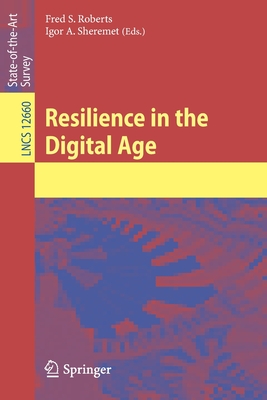Resilience in the Digital Age
暫譯: 數位時代的韌性
Roberts, Fred S., Sheremet, Igor A.
- 出版商: Springer
- 出版日期: 2021-02-20
- 售價: $2,770
- 貴賓價: 9.5 折 $2,632
- 語言: 英文
- 頁數: 199
- 裝訂: Quality Paper - also called trade paper
- ISBN: 303070369X
- ISBN-13: 9783030703691
-
相關分類:
Machine Learning
海外代購書籍(需單獨結帳)
相關主題
商品描述
The growth of a global digital economy has enabled rapid communication, instantaneous movement of funds, and availability of vast amounts of information. With this come challenges such as the vulnerability of digitalized sociotechnological systems (STSs) to destructive events (earthquakes, disease events, terrorist attacks). Similar issues arise for disruptions to complex linked natural and social systems (from changing climates, evolving urban environments, etc.). This book explores new approaches to the resilience of sociotechnological and natural-social systems in a digital world of big data, extraordinary computing capacity, and rapidly developing methods of Artificial Intelligence.
Most of the book's papers were presented at the Workshop on Big Data and Systems Analysis held at the International Institute for Applied Systems Analysis in Laxenburg, Austria in February, 2020. Their authors are associated with the Task Group "Advanced mathematical tools for data-driven applied systems analysis" created and sponsored by CODATA in November, 2018.
The world-wide COVID-19 pandemic illustrates the vulnerability of our healthcare systems, supply chains, and social infrastructure, and confronts our notions of what makes a system resilient. We have found that use of AI tools can lead to problems when unexpected events occur. On the other hand, the vast amounts of data available from sensors, satellite images, social media, etc. can also be used to make modern systems more resilient.
Papers in the book explore disruptions of complex networks and algorithms that minimize departure from a previous state after a disruption; introduce a multigrammatical framework for the technological and resource bases of today's large-scale industrial systems and the transformations resulting from disruptive events; and explain how robotics can enhance pre-emptive measures or post-disaster responses to increase resiliency. Other papers explore current directions in data processing and handling and principles of FAIRness in data; how the availability of large amounts of data can aid in the development of resilient STSs and challenges to overcome in doing so. The book also addresses interactions between humans and built environments, focusing on how AI can inform today's smart and connected buildings and make them resilient, and how AI tools can increase resilience to misinformation and its dissemination.
商品描述(中文翻譯)
全球數位經濟的成長使得快速溝通、即時資金流動以及大量資訊的可獲得性成為可能。然而,這也帶來了挑戰,例如數位化社會技術系統(Sociotechnological Systems, STSs)對於破壞性事件(如地震、疾病事件、恐怖攻擊)的脆弱性。類似的問題也出現在複雜的自然與社會系統的中斷(例如氣候變遷、城市環境的演變等)。本書探討在大數據、卓越計算能力以及快速發展的人工智慧方法的數位世界中,社會技術系統和自然社會系統的韌性的新方法。
本書的大多數論文是在2020年2月於奧地利拉克森堡的國際應用系統分析研究所舉辦的「大數據與系統分析研討會」上發表的。這些論文的作者與2018年11月由CODATA創建和贊助的「數據驅動應用系統分析的先進數學工具」任務小組有關聯。
全球COVID-19大流行突顯了我們的醫療系統、供應鏈和社會基礎設施的脆弱性,並挑戰了我們對於系統韌性的認知。我們發現,當意外事件發生時,使用人工智慧工具可能會導致問題。另一方面,來自感測器、衛星影像、社交媒體等的海量數據也可以用來提高現代系統的韌性。
本書中的論文探討了複雜網絡的中斷及其後最小化偏離先前狀態的算法;引入了一個多文法框架,用於當今大規模工業系統的技術和資源基礎,以及由破壞性事件所引起的轉變;並解釋了機器人技術如何增強預防措施或災後反應以提高韌性。其他論文探討了數據處理和處理的當前方向以及數據的公平性(FAIRness)原則;大量數據的可用性如何有助於韌性社會技術系統的發展,以及在此過程中需要克服的挑戰。本書還探討了人類與建成環境之間的互動,重點在於人工智慧如何為當今的智慧和互聯建築提供資訊並使其具備韌性,以及人工智慧工具如何提高對錯誤資訊及其傳播的韌性。












